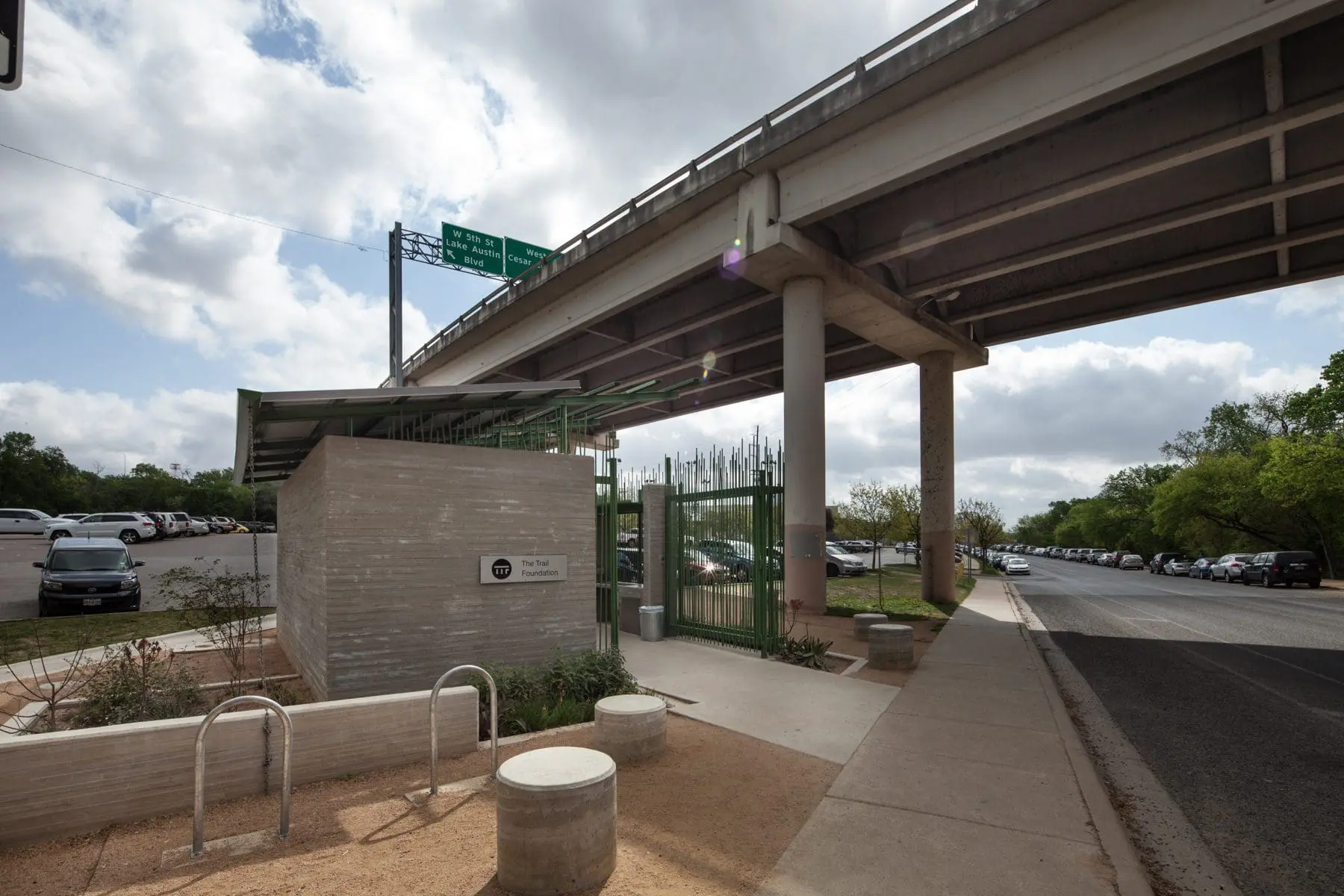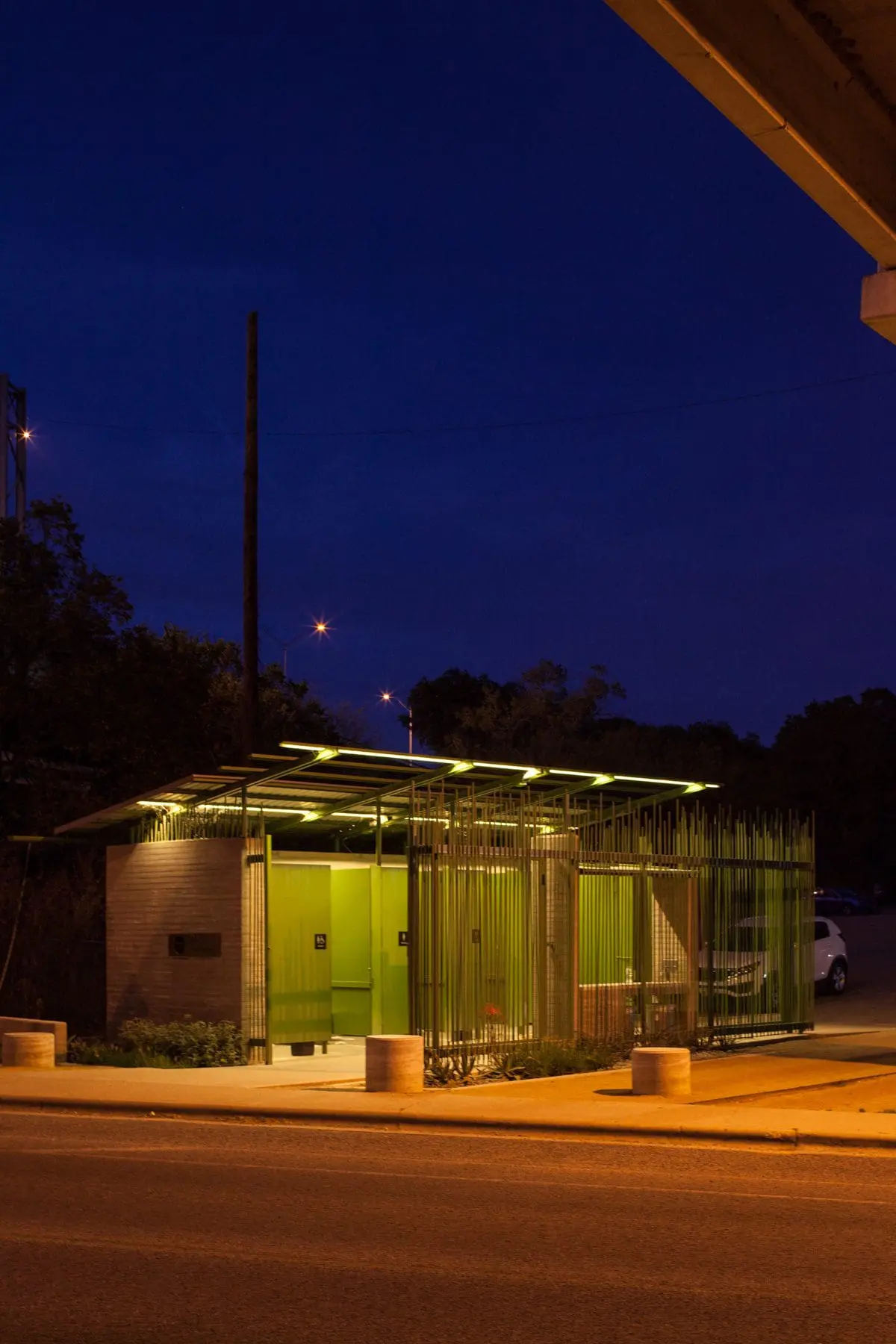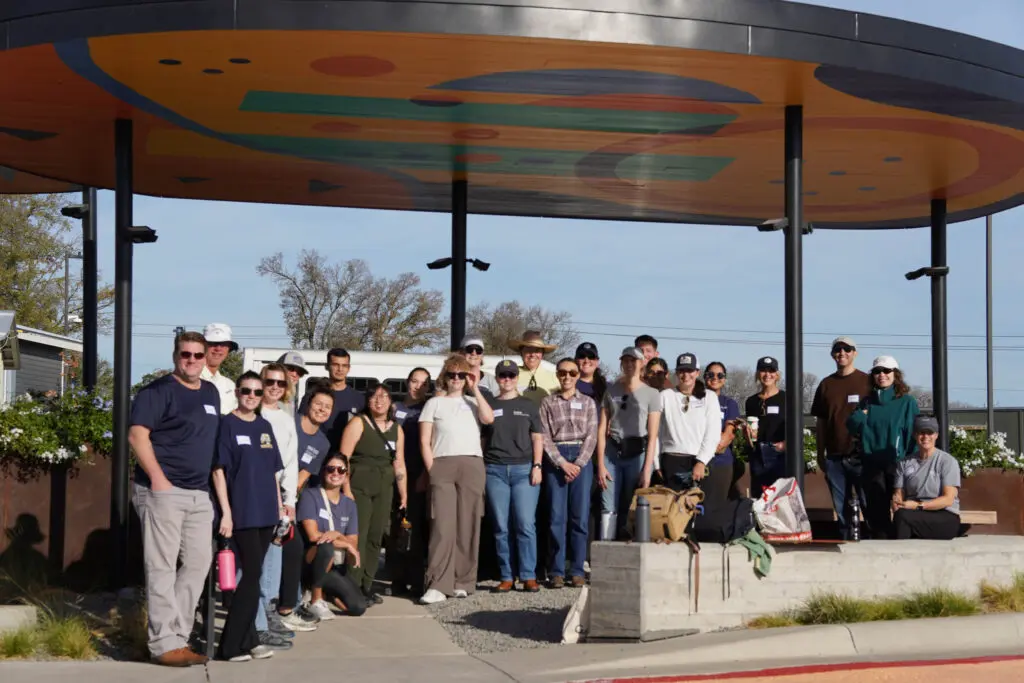Happy Trails!

With the colder weather mostly behind us and the triple digit temperatures still a few months away, Spring is the perfect time to take ‘A Guide to Austin’s Architecture’ self-guided tour along the Ann and Roy Butler Hike-and-Bike Trail to explore Austin’s iconic architecture and cherished spaces that make our city so special.
We are thrilled to see that the Trail Foundation’s Johnson Creek Restroom made the list as one of the stops on the tour.
Situated at the most popular access point to the Ann & Roy Butler Hike-and-Bike Trail, the Johnson Creek Restroom serves up to a third of the trail’s daily users. The playful structure provides runners with a safe, open-air facility as well as a symbolic point of demarcation between the paved parking lot and the natural landscape of the trail. The restroom’s location also marks the beginning of the Johnson Creek Greenbelt, a mile-long urban park that weaves between the concrete piers of the highway above and the natural landscape along the dry creek below.

The two primary elements of the restroom—the concrete walls and rebar screens—are examples of biomimetic architecture, in which physical elements are designed to recall natural forms. The walls that frame the stalls and sink are made from board-formed concrete, in which the pattern of the wooden formwork used to shape the poured-in-place concrete is left exposed. Here, the architects made a pattern of closely spaced boards alternately set back to create deep shadow lines. The overall effect recalls the organic layering of the exposed limestone along the nearby creek bed. Likewise, the metal screens are made from ordinary steel reinforcing bars popularly known as rebar (usually hidden inside of concrete) painted green to recall the prairie grasses and reeds that flourish along the shores of Lady Bird Lake.

In the same way that the restroom’s primary materials were selected for their durability, the open feel of the restroom is intended to create a sense of safety for the thousands of people who use this trailhead daily (a survey by The Trail Foundation indicated that most of the trail’s users go it alone and prioritize safety, seating, and shade). The openness of the rebar screens deters loitering and increases visibility between the trail, parking lot, and restrooms. The stalls are illuminated by sunlight during the day, and by thin LED fixtures embedded in the steel battens that span between the sloping rafters at night.

Check out the entire tour here.


